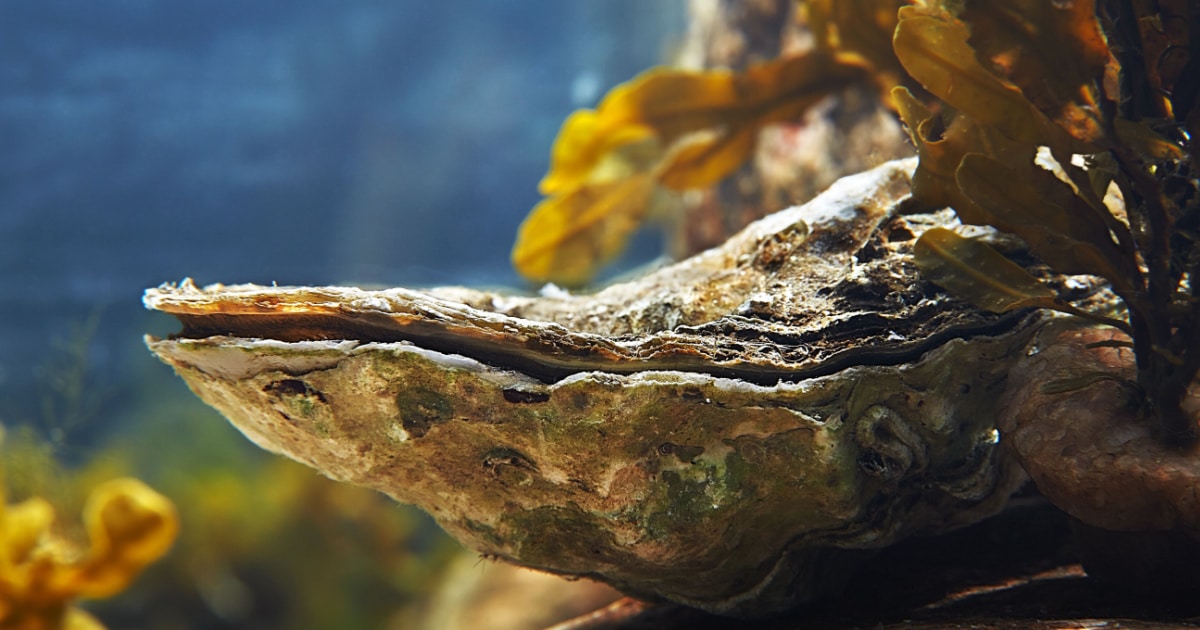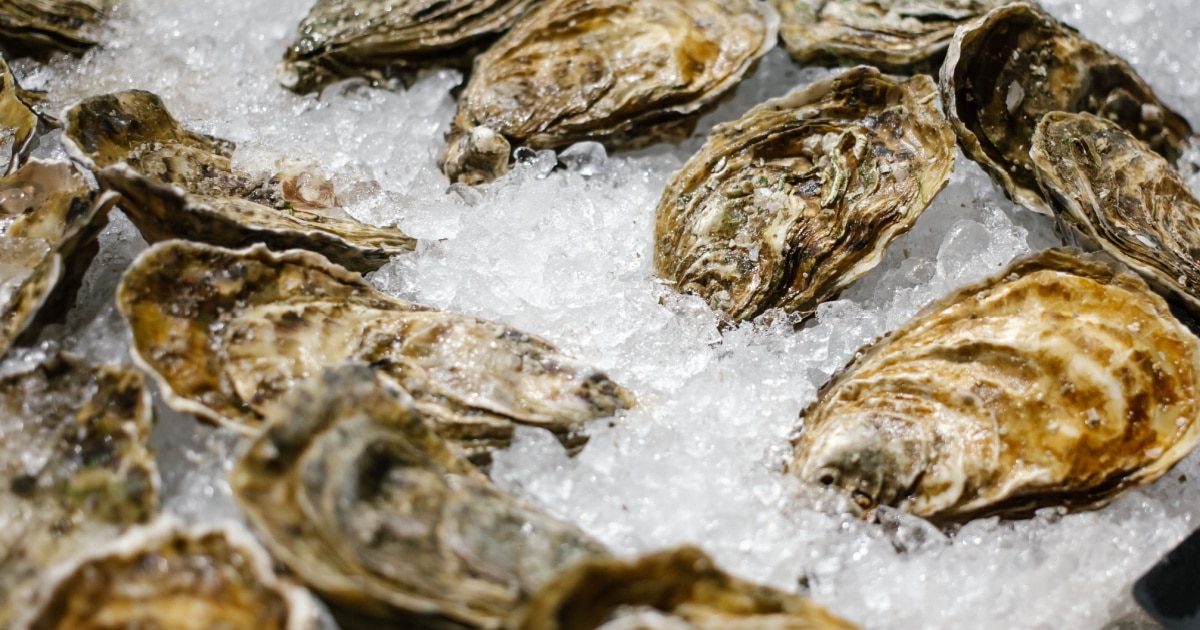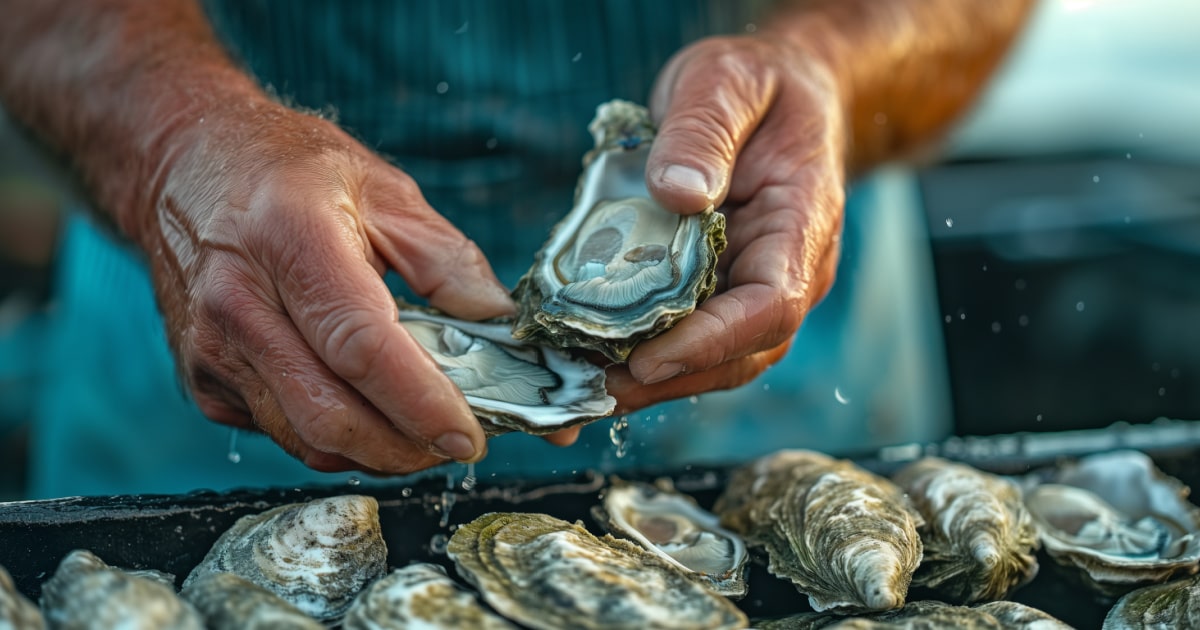Introduction: Understanding Oyster Seasonality
Hello to all our valued customers and fellow seafood enthusiasts. Today, I want to talk about a topic that’s essential for any oyster lover: “When are oysters in season?” As someone who specializes in blue crabs and appreciates all kinds of seafood, I find the seasonality of oysters particularly interesting.
There’s a lot of talk about the best time to enjoy oysters, and you might have come across the old saying about the “R” months. But what’s the real story? Is there a specific season for oysters, or can we enjoy them all year round?
In this article, we’ll delve into the world of oysters and uncover the facts about their seasons. Whether you’re a seasoned oyster aficionado or new to this delicacy, understanding their seasonality is key to enjoying them at their best. So, let’s get started and explore when oysters are truly in season.
- The “R” Months Rule: When Are Oysters in Season
- Seasonal Flavors: How Time of Year Affects Oysters
- Regional Differences: When Are Oysters in Season from Maryland to the World
- Choosing and Savoring Oysters in Their Prime Season (200 words)
- Conclusion: Embracing the Full Cycle of Oyster Seasons
- FAQs on Oyster Seasonality (When Are Oysters in Season)
- When Are Oysters in Season (Wild Caught Season)
- Explore More From T.L. Morris Seafood
The “R” Months Rule: When Are Oysters in Season
Let’s dive into a bit of oyster history, particularly the famous “R” months rule. You might have heard that oysters should only be eaten in months with an “R” – from September to April. But have you ever wondered why?
This rule dates back centuries and was originally based on a simple observation: oysters seemed to taste better during the cooler months. In the days before refrigeration, summer months posed a risk for shellfish spoilage and foodborne illnesses. Oysters spawn in warmer waters, and during this time, they can become less flavorful and more watery.
However, with modern advancements in oyster farming and refrigeration, the “R” months rule isn’t as strict as it used to be. We can now enjoy fresh, safe oysters almost all year round. But there’s still something special about oysters in the “R” months. They’re often plumper and tastier, making these months a favorite for many oyster enthusiasts. Understanding this rule helps us answer the question, ‘When are oysters in season?’ especially in relation to traditional beliefs.
So, while the “R” months rule started for practical reasons, it has now become more of a guideline for enjoying the best quality oysters.

Seasonal Flavors: How Time of Year Affects Oysters
Oysters are not just a culinary delight; they’re also fascinating when it comes to how their flavor and texture change with the seasons. This variation is one of the reasons why oyster connoisseurs find them so intriguing.
In the colder months, typically the “R” months, oysters are known for their firmer texture and richer flavor. This is because oysters fatten up during the colder seasons, leading to a creamier and more substantial mouthfeel. The colder waters also contribute to a cleaner, crisper taste, often preferred by oyster lovers.
Come warmer months, oysters undergo spawning, which affects their physical composition. During this time, they become softer and their flavor becomes milder. Some describe summer oysters as being more watery. This doesn’t necessarily mean they’re less enjoyable; it’s just a different experience. Summer oysters might appeal to those who prefer a lighter taste.
Understanding these seasonal changes can enhance your oyster-eating experience. It’s similar to how we enjoy different fruits and vegetables across seasons – each season brings its own unique flavor profile to the table.
So, while you can enjoy oysters any time of the year, being aware of these seasonal differences can help you choose oysters that match your taste preferences at any given time.
Regional Differences: When Are Oysters in Season from Maryland to the World
Oyster seasonality is a fascinating aspect that varies by region, and being in Maryland, we’re in one of the prime spots for oyster lovers. Let’s explore how oyster seasons differ from the East Coast of the United States to other parts of the world.
In Maryland and along the East Coast, the traditional “R” months from September to April mark the peak oyster season. During these cooler months, East Coast oysters, including those from the Chesapeake Bay, are known for their plumpness and rich flavors. This is when they’re often at their best, both in texture and taste.
Moving to the Pacific Northwest, the colder waters here align with the “R” months, producing oysters with a firm texture and a deep, complex flavor profile during the winter.
In contrast, the Gulf of Mexico’s warmer waters allow for a more extended season. Gulf oysters can be enjoyed almost all year round, with subtle changes in flavor across different seasons.
Across the ocean, in Europe, places like France and the UK also celebrate their oyster harvests during the colder months, with numerous festivals and events highlighting the winter as the prime time for oysters.
Understanding these regional variations helps us appreciate the diversity of oysters available. Whether it’s the briny depth of a Maryland oyster or the delicate sweetness of a Pacific Northwest variety, each region offers something unique.
Choosing and Savoring Oysters in Their Prime Season (200 words)
Selecting the best oysters starts with understanding when are oysters in season. Enjoying oysters at their best can greatly enhance your culinary experience. Here’s how you can make the most of oyster seasonality, no matter where you are.
1. Know the Season: First, it’s essential to be aware of the oyster seasons in your region. For instance, in Maryland, the colder months are ideal for enjoying local oysters. If you’re trying oysters from different regions, ask your supplier about the best season for each variety.
2. Freshness is Key: Always look for the freshest oysters available. Fresh oysters should smell like the ocean – clean and briny, not fishy. Their shells should be tightly closed, indicating that they’re alive and fresh.
3. Consider the Flavor Profile: Each oyster variety has its unique flavor profile, influenced by its habitat. East Coast oysters, like those from Maryland, tend to have a balance of saltiness and sweetness, while West Coast varieties might offer more fruity or cucumber-like notes.
4. Proper Storage: If you’re not eating the oysters immediately, store them properly. Keep them in the refrigerator, flat side up, covered with a damp cloth. This helps maintain their freshness until you’re ready to enjoy them.
5. Serving Suggestions: Oysters can be enjoyed raw, steamed, grilled, or even fried. For a classic experience, try them raw on the half shell with a simple squeeze of lemon or a dash of hot sauce.
By choosing your oysters wisely and understanding their seasonal flavors, you can elevate your oyster-tasting experience to new heights.

Conclusion: Embracing the Full Cycle of Oyster Seasons
As we’ve explored, the world of oysters is rich and varied, with each season bringing its own unique offerings. From the plump, flavorful oysters of Maryland’s colder months to the year-round delights of the Gulf, there’s always something special to discover in the oyster world. Understanding the seasonality of oysters not only enhances our appreciation for these marvelous shellfish but also allows us to enjoy them at their peak. So, whether you’re savoring a local catch or experimenting with varieties from afar, remember that each oyster has a story tied to its season and region. Happy oyster eating!
FAQs on Oyster Seasonality (When Are Oysters in Season)
1. When are oysters in season in Maryland?
- “In Maryland, oyster season peaks from October to March, when they are known for their rich flavor and plump texture.”
2. Can you eat oysters in the summer months?
- “Yes, with modern farming and refrigeration, oysters are safe to eat year-round, though their texture and flavor may vary with the season.”
3. Do oysters from different regions taste different?
- “Absolutely! Oysters’ flavors are influenced by their regional waters, leading to a diverse range of tastes from briny to sweet.”
4. How should I store fresh oysters at home?
- “Keep them in the refrigerator, flat side up, covered with a damp cloth to maintain freshness.”
5. Are there specific oysters that are best for raw consumption?
- “Most oysters can be eaten raw, but it’s always good to ask your supplier for recommendations based on freshness and flavor profile.”
6. How does the spawning season affect oysters?
- “During spawning, typically in warmer months, oysters can become softer and less flavorful.”
7. What’s the best way to enjoy oysters?
- “Oysters can be enjoyed raw, steamed, grilled, or fried. Trying them raw on the half shell is a classic way to savor their natural flavors.”
8. Why do oysters taste better in colder months?
- “In colder months, oysters are not spawning, which leads to a firmer texture and a more concentrated flavor.”
When Are Oysters in Season (Wild Caught Season)
- Maryland (Chesapeake Bay) and the East Coast of the United States
- Season: October to March
- Pacific Northwest (Washington, Oregon)
- Season: Year-round, with peak quality from October to April
- Gulf of Mexico (Texas, Louisiana, Florida)
- Season: Year-round, with some areas having peak months from November to April
- Northeastern United States (Maine, Massachusetts)
- Season: October to May
- California
- Season: Year-round, with the best months from November to April
- Virginia
- Season: October to March
- South Carolina and Georgia
- Season: Typically October to May
- British Columbia, Canada
- Season: Year-round, with the best quality from September to April
- United Kingdom (England, Scotland, Wales)
- Season: September to April
- France
- Season: October to April, with some variations by region
- Australia
- Season: Varies by region; Southern Australia typically has peak season from April to September, while Northern regions can have year-round harvesting
- New Zealand
- Season: March to August
These seasons can vary slightly based on specific regional regulations and environmental conditions. It’s always a good idea to check local guidelines and recommendations for the most accurate and current information.
Explore More From T.L. Morris Seafood
If you enjoyed this post, you’re in for a treat! Dive deeper into seafood with some of my other articles that readers have loved:
- Pea Crab: The Astonishing Hidden Guests Inside Your Next Oyster!– Unveil the secret life of a pea crab inside oysters: tiny, fascinating creatures shaping the marine ecosystem’s delicate balance.
- Unlock the Mystique of Fresh Oysters: An Enchanting Adventure– Delve into the allure of fresh oysters: uncover shucking techniques, taste journeys, and ideal pairings in our insightful guide.
- Are Oysters Good for You? The Comprehensive Guide– Discover the health benefits of oysters in our latest article: Are oysters good for you? Dive into the facts now!
- Unlock the Secrets: How Do Oysters Reproduce?– Explore the fascinating process of how do oysters reproduce, from spawning to larvae growth, and their vital role in marine ecosystems.
Stay connected and keep exploring! Don’t forget to subscribe for the latest updates and insights.

